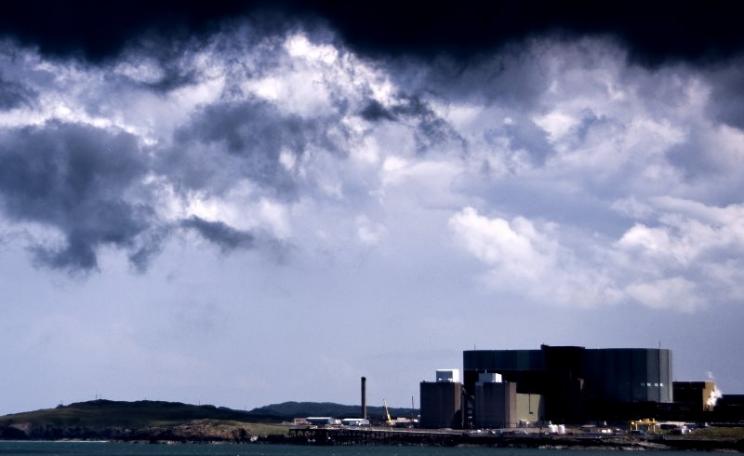Scenery, geology, wildlife and flora combine to make the Valbona Valley and the surrounding mountains one of the finest natural habitats in the Balkans and indeed in the whole of Europe
Albanian campaign groups are urgently calling for support to protect a pristine area of the country under threat from three hydroelectric power projects.
The Valbona Valley in northern Albania faces destruction from the planned works, despite being within the protected area of the Valbona National Park.
Catherine Bohne, campaigner from Albanian NGO TOKA, and owner of the website Journey to Valbona, says the developments began without any public consultation, and she has sent out an urgent appeal to help save this presently unspoilt part of the country. Campaigners say the work is illegal and they are now launching a legal challenge against the developments.
Catherine said: "The country is poor, the people are very isolated, and have been striving hard to make an environmentally friendly tourist attraction of the beautiful and so far unspoilt Valbona Valley - a biodiverse haven for plants and animals.
"It is now under threat from three large hydroelectric projects. The price of energy is falling, and solar will kick in soon, with the result that even the profit expected will not be earned."
The Albanian Government, under former Prime Minister Sali Berisha, granted three concession contracts for the construction of six hydropower plants along the Valbona river.
The campaign against the hydroelectric projects started in January 2016 - when Catherine says plans were seen for the Dragobia Energy plants entirely by accident.
An Environmental Impact Assessment was carried out, but campaigners say it was of extremely poor quality and claim that developers failed to properly assess a number of issues such as:
- Biodiversity: The EIA offers no detailed analysis of species and habitats in the area; moreover, species regularly seen in the NP are not even mentioned. EIA doesn't refer to the area's "protected" status, and doesn't mention the conformity with Bern or Espoo Conventions nor with EU Habitats and Bird Directives.
- Development: Campaigners say this did not meet legal deadlines. The EIA was based on the outdated legal requirement from 2003 instead on the new Law No. 10440 that has already been in effect. Furthermore, the project missed the two-year deadline to start construction works, so the environmental license should automatically be invalidated and the process of the new EIA started.
- Public consultation: This has been called inadequate and ineffective. A page with 20 signatures from one small village was submitted as evidence of the EIA public consultation (the Valbona Valley is home to over 1.000 people). Campaigners say that affected people were not adequately consulted and that a petition among locals against the hydropower development gathered 94 signatures.
Scenery, geology, wildlife and flora combine to make the Valbona Valley and the surrounding mountains one of the finest natural habitats in the Balkans and indeed in the whole of Europe
- No consultation with the neighbouring countries: The EIA makes reference to the "creation of roads through virgin territories" to Montenegro, which is not part of licensing documents. The intent to construct a major road route to Montenegro, delivering increased auto traffic to Prokletije National Park, implies transboundary impact, and requires consultation with Montenegro under the Espoo Convention.
- Poor project design and planning: Campaigners say the project design is based on a river discharge of 12.66 m3/s, but elsewhere the developer reports that the river maximum flow is only 7 m3/s and around 3 m3/s during dry months. Hydrology data is out of date and although power lines and roads are drawn in licensing maps, no description of their construction parameters or impacts is made.
In a letter to Julian Beqiraj, Director of the National Environment Agency of Albania, Professor Emeritus and Member of the Science Academies of Denmark and Poland, Arne Strid writes: "Scenery, geology, wildlife and flora combine to make the Valbona Valley and the surrounding mountains one of the finest natural habitats in the Balkans and indeed in the whole of Europe. Botanically it is characterized by a unique combination of Mediterranean and arctic-alpine elements, and a high degree of endemism.
"I have worked on the Balkan flora (especially in Greece) for 50 years and written many books and articles on the subject. A couple of years ago I spent a few days in the Valbona area and found it one of the most interesting habitats I have encountered in my many ears of travelling in the Balkans.
"It would seem wise and farsighted to preserve this unique natural habitat for future generations. I thus respectfully ask you to postpone any decision on development projects in the area until the environmental impact has been thoroughly studied and suggestions for sustainable development have been considered."
Since work commenced on September 28, access roads have been constructed, which were not included in the project plans or in the Environmental Impact Assessment.
The campaign against the developments has gained momentum since a jazz concert against the hydropower plants was held last month, and campaigners are now rallying for more supporters against the developments.
More information at http://www.journeytovalbona.com/good/river-initiatives and to sign the petition visit https://actions.sumofus.org/a/stop-hydroelectric-power-plants-on-albania-s-wild-rivers
Laura Briggs is the Ecolgist's UK-based news reporter
Follow her @WordsbyBriggs







